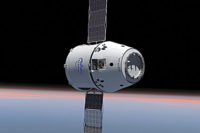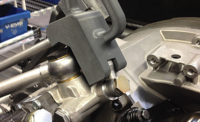Traditionally, it has taken months or even years to get equipment to astronauts up in space, depending on the launch resupply schedule. Zero-gravity 3D printing, however, may soon completely eliminate the need to send parts or equipment to spacecraft.
In November 2014, International Space Station (ISS) astronaut Barry Wilmore installed the Zero-G 3D printer in the station’s Microgravity Science Glovebox facility. The next month, he 3D-printed a ratchet wrench in four hours. A CAD file transmitted to the 3D printer (from NASA’s Marshall Space Flight Center in Huntsville, AL) served as the wrench model.
“In less than a week, the wrench was designed, approved by safety and other NASA reviewers, and the file was sent to space,” explains Niki Werkheiser, ISS 3D printer program manager at the Space Flight Center. “NASA wanted to validate the process for printing on demand, which will be critical on longer journeys to Mars.”
Mountain View, CA-based Made In Space Inc. designed, built and tested the Zero-G printer that was launched to the ISS on Sept. 21, 2014. During 2013, the printer underwent vibration, environmental and vacuum trials to verify it could withstand fluctuating pressure levels.
For two years prior, no-float printer prototypes underwent parabolic test flights on Zero Gravity Corp.’s specially modified Boeing 727. Overall, printer development required more than 30,000 hours of 3D printing technology testing and 400 microgravity test flights.
The wrench measures 4.48 inches long by 1.29 inches wide and consists of 104 micro-thin deposited layers of plastic. It was designed by Noah Paul-Gin, an engineer at Made In Space.
After printing the wrench, Wilmore printed 24 other parts (featuring 14 unique shapes) that were preprogrammed into the printer before it left Earth. All 25 parts were returned to Earth in February 2015 on the SpaceX Dragon spacecraft, which also brings supplies to the ISS.
Last April, NASA materials engineers began comparing these parts with a duplicate set it had printed before sending the Zero-G to the ISS. They performed durability, strength and structural tests on both sets, and also put them under an electron microscope to scan for differences. Data obtained from these tests will help NASA and Made In Space complete the Archinaut project, which is the second phase of printer operations on the ISS and
begins later this year.
“If you can transmit a file to the station as quickly as you send an email, it opens up endless possibilities [to make] all types of things: from CubeSat components, to experiment hardware,” says Werkheiser. “We are working with the astronaut office to identify existing tools that we can make with the printer. It [may soon become] routine to see station astronauts using tools that they built in space, or make objects that previously couldn’t even be launched to space.”
For more information on zero-gravity 3D printing, call 650-701-7722 or visit www.madeinspace.us.




